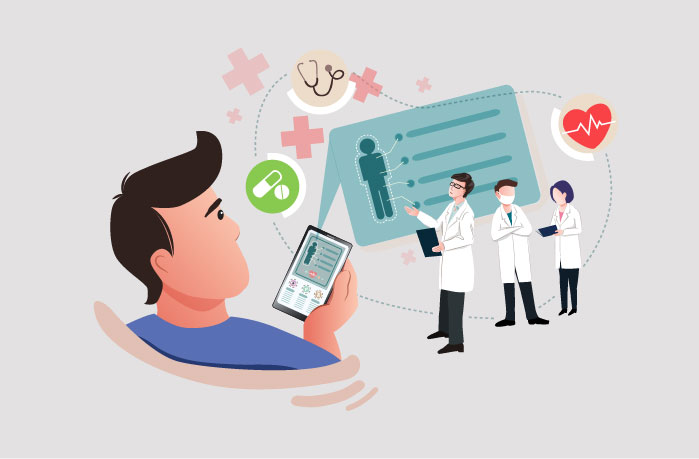As an animator working in the medical field, do you often feel overburdened? What kind of medical animation video examples are you looking for as a model for your own work? Or, perhaps, while choosing a medical animation type? In fact, healthcare training animations have a greater impact than e-learning animations.
There are, however, many different kinds of medical animation to pick from. If you’re an instructional designer in the healthcare industry, you have to decide.
If you choose the correct animation videos, they can be excellent investments that save your money while also increasing your effectiveness.
The following aspects will be explored in order to assist you in selecting the best type of medical animation for medical content:
- Types of medical animation
- The best practices for each type of animation in healthcare and medicine
- Type of content should be used in animated medical videos
- Top examples of animated medical videos
So, without any further ado, let’s get started. Shall we?
Examples of the Best Medical Animation Videos
Type#1 Interactive or electronic learning animated medical videos
After Covid-19, e-position learning in healthcare and training has been elevated. The use of animation in medical instruction has grown dramatically over the years since it has always been a useful tool for conveying pictures.
Using 2D animations with various expressions can help e-learning medical information captivate students. As a result, 2D animation may have a significant positive influence on student moods and engagement. 3D may be used for serious and plain information because of its brilliant color choice, fast-moving actions, and distinctive styles.
Example 1: BuzzFlick
To explain how the gas chromatograph works, BuzzFlick created a 2D animated explainer video to explain the whole process. The process begins by taking a patient’s blood sample and showing how the results are obtained.
Let’s take a look at the video:
Example 2: Simple Nursing
Using over 400 thousand subscribers to their YouTube channel, Simple Nursing has had great success with 2D animation in their online nurse training courses.
Type#2 Patients’ education medical animated video
An animated patient education video is typically shown to patients before a medical appointment to help them understand the procedures that will be performed. Additionally, hospitals may employ patient educational videos to demonstrate the services they offer to their patients as an explanation.
It is vital to define the content and graphics of this form of medical animation to stand out from the competition in the healthcare industry
Explainer videos don’t need incredibly fine-grained visuals. These videos are often prepared in a lighthearted manner to keep the patients calm.
It’s possible to make patients feel happy by using 2D animation in their videos. Two-dimensional (or 2D) animated patient education movies can be created using any of these methods: whiteboard, hand-drawn, or vector.
Example 1: iCareBetter
iCareBetter, a whiteboard animation video, describes the heart. Here’s an illustration of medical animation. A brief explanation of heart failure, its causes, and its symptoms are explained in the video. Isn’t it true that fancy visuals and motions aren’t necessary for effective communication with patients?
Example 2: BuzzFlick
If you want to add a little oomph to your medical video animation, you should consider using the 3D animation technique. If compared to whiteboard animation, 3D animated videos are more interactive and can help you gain patients’ attention in the first two seconds.
Let’s check out the video to see the difference between the two methods of animation:
Type#3 Medical stimulation animation video
In medical simulation animation, representations of things, body parts, or the structure of bones are illustrated in a clear and concise manner. Hospitals and physicians that need to hone their surgical abilities use this form of animation.
3D medical simulations are becoming more and more common as the use of AR/VR technology grows. Surgeons can train on virtual patients thanks to medical simulation animation and virtual reality.
When teaching fundamental topics, 2D animation such as whiteboard explainers is advised, whereas 3D combined with virtual reality (VR) is recommended for more thorough simulations. Using a variety of medical animations in training sessions might help alleviate the tension of witnessing surgical procedures all the time.
Example: Lange Productions medical graphics and 3D animation video
The video Lange Productions have made clearly portrays different medical procedures. From breast implantations to the human brain, it demonstrates each procedure in a brief yet effective way. Let’s take a look at the video to learn more about it:
Type#4 Pharmaceutical mechanism of action medical animation video
Medical animation example for drug MOA has the same appearance and feel of cellular and molecular animation. But despite the similarity in style and content, these two forms of animation are quite different. Pharmacists and patients alike can benefit from medical animation for MOA, which can be used to illustrate the effects of pharmaceuticals.
Animation techniques for medication MOA can be versatile, depending on the target demographic and the degree of information in each piece of material. The prices of 3D might be a lot greater compared to 2D. Hence, 2D animation is a superior alternative in price as it has the same efficacy level.
Example: Scientific Animation
The video production company produced a pharma MOA video to demonstrate how a drug molecule fights all the evil infections viruses that can harm the human immune system.
Take a look at their medical video animation to seek inspiration for your project:
P.S: If you’re looking for a video animation company offering stellar 2D video animation services, get in touch with us.
Type#5 Molecular and cellular medical animation video
This unique form of medical animation is employed for certain medical and biological themes. It may be employed in higher education for teaching medicinal substances or instruction about cells and molecules’ motions and effects. Moreover, this form of video is used in laboratories where it is employed by chemists to view the effects of biological reactions.
Cellular and molecular animation is best displayed in 3D. Even if not common, there are occasions where 2D animation can simply express concepts, and there’s no need for 3D. Once it comes to basic cells and chemical models, 2D can readily express the content with better pricing rates.
Example: WEHImovies
For a science-art exhibition, WEHI movies created a DNA animation video. The video demonstrates a human cell and other important components of it in the video. There’s no voice-over in the video. They have just used text and different types of sounds to make the video more interactive for viewers.
Type#6 Emergency treatment medical animated video
Instructional movies for CPR (cardiopulmonary resuscitation) and first aid are the most often utilized examples of emergency care videos, respectively. These videos cover a wide range of topics, including nurse education and basic first aid, and are aimed at a wide range of viewers. It is possible to convey complex activities without the need for actors by using animation.
In contrast to live-action videos, which might result in undesirable outcomes if performers aren’t accurate in their medical procedures, animation can completely avoid these impacts.
When expressing motions requiring accuracy, we propose hand-drawn or precise vector animation. Simple animations, on the other hand, can be utilized to convey more general directions that don’t require specific motions.
Example: First Aid
Emergencies can happen anywhere. We should be educated enough that if some injury is caused, we can offer first aid. But, how?
Gone are the days when medical camps were set, and they used to teach how to perform first aid. Now animated videos are made to educate people about first aid and how common people can perform it in case of emergency.
First aid animation produced a short whiteboard animated video that explains how to perform first aid in different situations such as heat stroke, hypothermia, burns, etc.
Let’s take a look at their whiteboard animated video:
P.S: If you’re inspired with this video style and want to opt for this video style for your next video, then you need to hire a reputable whiteboard animation company.
Type#7 Mental health education animated videos
The concept of mental health is a bit vague and hard to understand, especially to the young generation. Using the animation method to explain such a concept is a great idea.
This idea is now often used by medical organizations to promote mental health awareness among people.
Example: F.Learning
Using the 2D animation technique, F.Learning studio created a series on mental health for kids. They used interactive and unique characters and an engaging story to explain the process of how our emotions affect our bodies and cause physical pain. At the end of the video, they show a surfing emotions exercise to teach kids how they can control their emotions.
Type#8 Surgical planning and training medical animated video
Surgeons’ online training is notoriously challenging. Meanwhile, e-learners now have access to a new field of surgical training and planning thanks to technological advancements.
The fact that students may save both time and money by taking surgical training classes online is a major plus for this format. In surgical training for doctors, animations are widely utilized in the same way as they are in medical courses.
There are several facets of surgical training that are well-defined. Because of this, 3D animation and VR apps are the greatest options. The medical simulation includes a subset known as surgical animation. Medical simulation animation may be utilized in a wider range of settings than surgical training animation, which is the main distinction between the two.
There are several facets of surgical training that are well-defined. It makes sense to use VR in conjunction with high-quality 3D animations. In the field of medical simulation, surgical animation is a sub-division. Medical simulation animation may be utilized in more settings than surgical training animation, which is the major distinction between the two.
Example: Amerra Medical
To explain the complicated process of medical procedures like craniectomy, Amerra medical uses the 3D animation technique. If you take a look at the video, you’ll see how well they have demonstrated the whole process: from the first incision to the final stitches.
In Essence
Medical animation has and always will have a tremendous deal of usefulness. The efficacy of medical courses may be greatly enhanced by selecting the appropriate style of medical animation to go along with your course material.
However, animation for the healthcare industry might be more difficult because it’s a time-consuming method and it requires some special skills.
In this case, it’s a great idea to hire a medical video production company like BuzzFlick for such animated video projects.
We have been working in the video production industry for decades and offering various video production services, including medical video production.
If you’re interested in creating medical animation videos, feel free to contact us today!
Medical Animation Video: FAQs
- How much time does it take to make an animated medical video?
For the same length output, the production procedure may take up to six weeks if done by hand. It is up to the amount of experience of the animation vendor, however, to determine how long an animation series will last. A five-minute 3D animated short film can be created in around six months.
- How much does an animated medical video cost?
Video production costs for 3D medical animations can range from $5,000 to $50,000 per minute, depending on the amount of time and effort it takes to create it and the final rendering quality it achieves.




